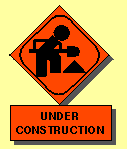| 29 CFR § 1613.701 etc. | | The required “reasonable accommodation” presupposes compliance with basic rules. Local [TACOM] employees deny any hazard or violation [exists] and thus [they] refuse to begin regular rule enforcement. As the process has not starred, local [TACOM] employees also refuse to begin “reasonable accommodation.”
For example, AR 1-8 requires that the environment “not endanger . . . cause discomfort or unreasonable annoyance.” The environment does these things to the extent [TACOM] management refuses to let me return to duty, but it refuses to halt the endangerment and discomfort the regulation prohibits.
[TACOM] Management refuses to implement the “unqualified and absolute” safety duty specified by OSHA [29 USC § 651 - § 678] in Nat’l Rlty & C. Co., Inc. v. OSHRC [160 U.S. App. DC 133], 489 F.2d 1257 (1973). Compliance with OSHA (or 5 USC § 7902) would undoubtedly preclude need for superimposing “reasonable accommodation” on top of the “unqualified and absolute” duty. Achieving a non-endangering, non-discomforting environment would likewise undoubtedly preclude need for superimposing the “reasonable accommodation” duty on top. However, achieving them would most assuredly provide a sound basis for then beginning the “reasonable accommodation” process.
The local [TACOM] employees involved also refuse to enforce other rules such as on courtesy, littering, loafing, efficiency, property control, etc. Enforcement of any one rule would resolve the situation. The local property control regulation, TACOM-R 190-4 is based on the same police power authority as was upheld in Austin v. Tennessee, 179 US 343 (1900). The rule forbids any habit-forming drug without a valid doctor’s prescription. It also limits personal effects to non-dangerous items. Even if personal effects were allowed to be dangerous, such would not allow personal reasons to be a basis for adverse action against a victim such as myself harmed by such personal effects.
No reason has ever been provided for the refusal to (a) enforce the pertinent rules and (b) begin reasonable accommodation. Even if there are reasons (and there are none, or they would have been articulated––although untimely), there is no cause for adverse action until after any alleged reasons are stated and opportunity to reply provided. Cf. 5 CFR § 752 and advance notice [5 USC § 7513(b)] requirements.
As made clear in cases such as State of Missouri ex rel. Gaines v. Canada, 305 US 337 (1938); Brown v. U.S., 256 US 335 (1921); and Sleeper v. Sandown, 52 N.H. 244 (1872), movement in safety is extensive and not limited to one room. Cf. OSHA cases and 5 USC § 7902. Reasonable accommodation superimposed on top of these basic legal facts will assuredly allow immediate return to duty in safe conditions.
|




